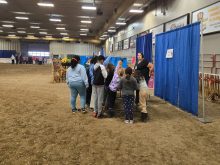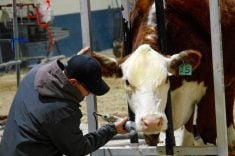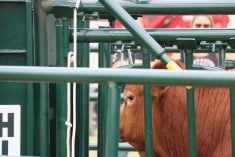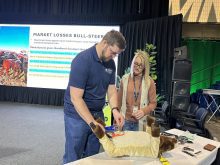Calving is already one of the busiest, most hectic times of a cattle producer’s year. For purebred herds, which largely calve in the winter, there’s the urgency of managing the season with temperatures dipping to -30 C or beyond.
Getting DNA samples is adding another task to an already exhausting to-do list, but some in the industry argue those samples could bring benefit and may become the norm in the sector.
Why it matters: Calving season is upon many early calving producers on the Prairies, a group that includes many seed stock operations.
Read Also
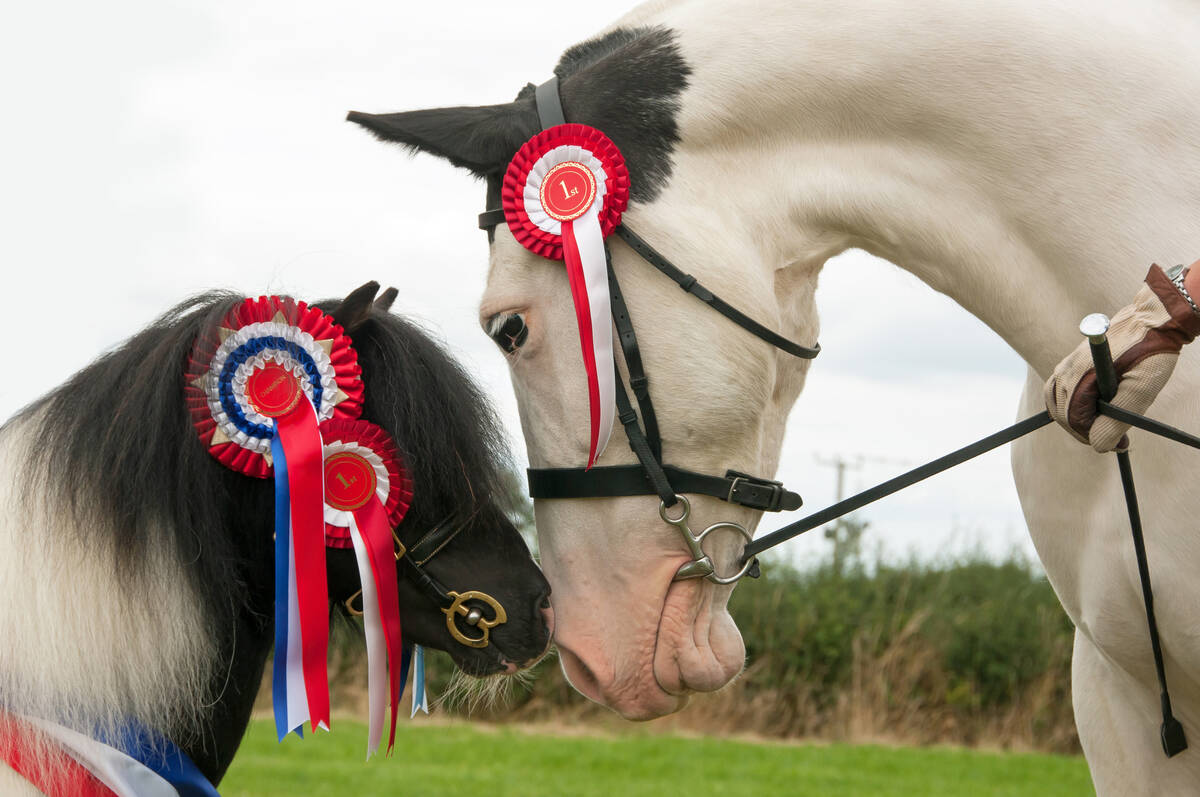
Linebreeding horses drives genetic bottlenecks
Too much linebreeding and prioritizing pedigree can narrow genetic diversity and lead to horse health problems in future generations.
According to Sydney Tuckwiller and Paige Pratt, the benefits of taking DNA samples are almost countless.
“It’s amazing what we can do with this technology, and especially the information that we can gather from an earlier age,” Tuckwiller says.
Both Tuckwiller and Pratt are genomics experts at Neogen Corporation, a Michigan-based food safety and animal health company. While Neogen serves both companion and performance animals, on the beef side of things they focus on genomics for cow-calf, feedlot and seed stock.
Both decision-making and the producer’s bottom line might be informed by a DNA test, allowing the producer to invest in the animals most likely to give them better bang for their buck.
“If we have a better idea of what that calf is at an earlier age, then we can start making decisions sooner and then not having to spend so much money on the input on those individuals, because at the end of the day, that’s what ends up costing us money,” Tuckwiller said.
“And we don’t want to have to hold on to something that is only going to cost us money in the long run and doesn’t meet our breeding objectives.”
Pratt also noted that, on her own operation, DNA testing allows her to be more confident in her cattle and to know the quality of the animals she is selling.
Sean McGrath is a rancher and consultant in Vermilion, Alta. He says implementing DNA testing has been one of the most beneficial things he has done on his operation.
“Especially from a seed stock perspective, the quicker you can figure out with a high degree of certainty the pedigree on that animal, it sets you up to have a good start,” he said.

Sampling logistics
There are multiple ways to get a DNA sample. The most common are a hair sample or tissue sample.
Hair, sourced from the tail, neck or poll, is the easiest to get, but also the most likely to fail. There must be enough root of the hair to test. It also can be more expensive than the tissue sample, because it requires lab technicians to separate the entire hair follicle, which is more labour-intensive.
Experts instead suggest that tissue sampling units (TSUs) are the recommended way to go.
“The TSUs have less fail rate, they speed up the process and… they are easier to take than any other method,” Pratt said.
The unit punches out a sample from the calf’s ear. It’s also not wasted labour. Many applicators have the ability to install an ear tag at the same time.
“I think every seed stock producer should do it if they’re serious about producing genetics for the marketplace,” McGrath said.
The producer advised his fellow farmers to make sure each sample is well labelled, avoiding calf identification mix ups, and sent for testing promptly.
“That sample doesn’t do any good sitting on the desk or sitting in a filing cabinet. So you need to have a system where you’re actually actively sending those things in and getting test results,” he said.
The cost of a DNA sample depends on where you get it and what you want the lab to test. For example, the AllFlex tissue sampling unit can cost around US$30 for a box of 10. NeoGen’s costs around US$20 for a box of 10. Neither includes the price of the applicator.
You will also have to pay to have the DNA samples processed in a lab. However, there are ways to save money.
“You don’t have to test for everything. You might want to do a high-density test and have the genetic evaluation of it more accurate to set EPDs (expected progeny differences) on a calf,” McGrath said. “You might not have to test homo polled or colour until that bull makes your bull sale.”
He says if you already have the sample collected and sent to the lab, you can ask them to test for other things in the future — you don’t have to pull the sample again.
A dry ear is also key, Pratt noted. “If mother’s fluids are still on that calf, we’re going to have cross-contamination…Do not clean it with any disinfectants or cleaners. Just wipe it dry with the towel and then take that sample,” she said.
Producers are also warned against leaving the unit in a truck overnight or in other places where it could freeze or (later in the year) get too hot, increasing failure risk.

When to sample
There is no hard-and-fast deadline for taking a DNA sample, as long as it is early enough in the calf’s life. During calving, however, is a logical choice, because you can tag the calf as you take the DNA sample. Some farmers also sample at weaning.
“Originally, we took them at preconditioning for weaning,” Pratt said of her operation. “And then by weaning we would have the results. We felt like maybe we needed to back that up in our operation to give us even more time to be able to kind of put it all together.”
Producers should give themselves enough time to take the sample, send it into the lab, and allow processing time before they start making decisions about the future of the calf.
Genomic record-keeping
When it comes to the importance of genomic record-keeping, Pratt says it’s becoming more and more widespread across the beef industry.
“You don’t have to do it (keep genomic records), but you do have to compete against the guy down the road that is.”
Dairy, poultry and pork have already been genetic testing for years, and it’s a staple in those industries. The grain industry, too, is constantly improving its technology. Pratt believes it’s time for the beef industry to catch up.
“You can get on the cart, or you can be left behind,” she said.
With more people using genetic testing, technology continues to improve as well.
“The same money you would have spent five years ago or 10 years ago, you’re getting way more powerful tests. And that’s not going to stop, that’s continuing. So, I think that’s pretty exciting,” McGrath says.





